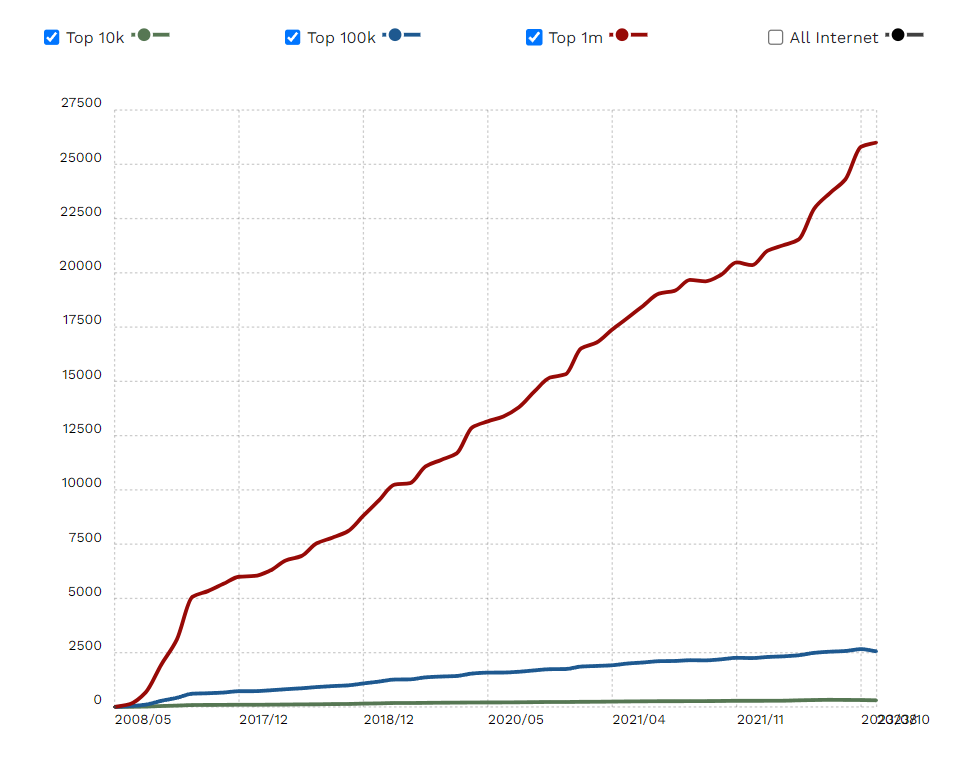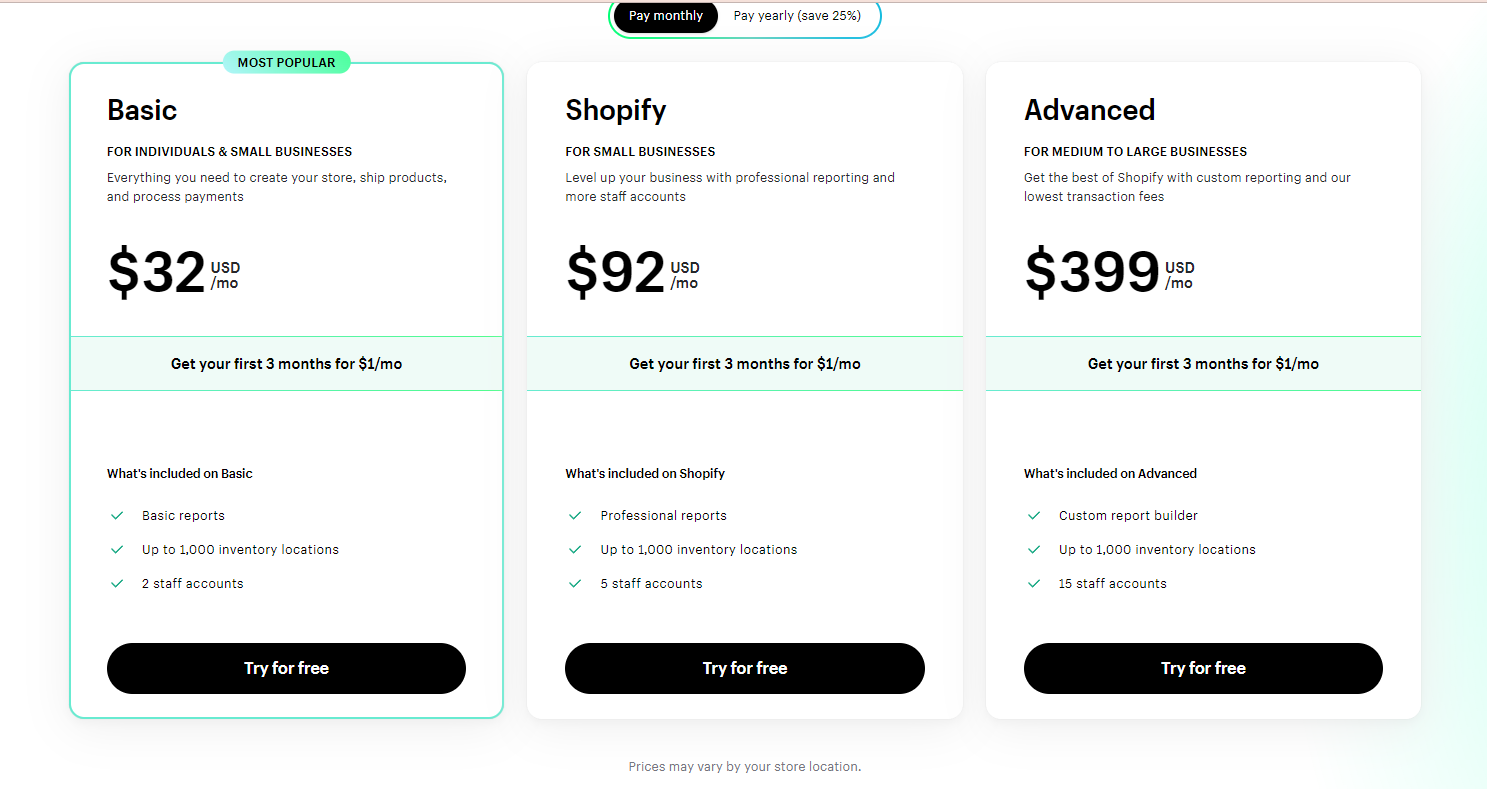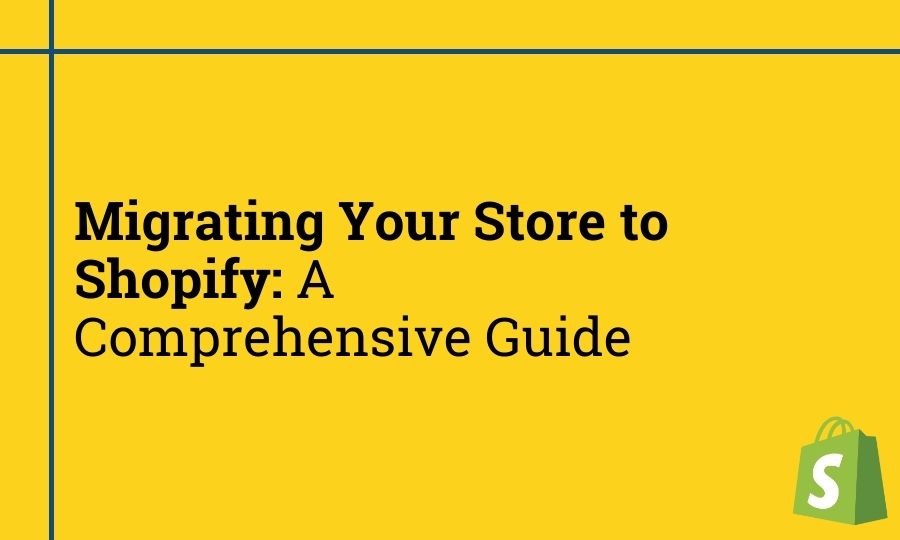Considering the transition of your e-commerce store to Shopify? It’s a strategic and great choice! In 2023, Shopify had more than 2.1 million people using it every day. But what’s even more impressive is that there are now over 4 million online stores using Shopify. These stores serve customers from all around the world, in different countries, languages, and industries. In this article, you’ll find a comprehensive guide to seamlessly migrate your store to Shopify while uncovering the numerous benefits it brings.

Source: Builtwith
Why migrate your store to Shopify
Shopify is renowned as one of the most versatile and popular e-commerce platforms available. Ensuring your brand continues its journey on a platform that not only offers boundless opportunities but also allows for diversified growth is essential. Discover below the top five compelling reasons why migrating your business to Shopify is a wise decision:
- User-friendly platform: Shopify is well known for its user-friendly interface. You don’t need to be a tech expert or to have a developer on your team to work with this platform. It is easy to start your store, from adding products, creating collections, and also building your store from scratch using a theme! And the best part? Shopify also offers different types of automation with Shopify Flows that can help you manage different daily tasks and focus more on other areas ( for example removing out-of-stock products from collections, adding specific labels for products based on certain criteria and so on)
- E-commerce Features: Shopify offers a comprehensive suite of e-commerce tools and features. You can effortlessly manage inventory, handle payments, track customer data, and optimize your website for SEO, among other things. It’s an all-in-one solution tailored to meet the needs of online businesses.
- Scalability: You can begin small and gradually expand your operations without the hassle of switching platforms. Also, take into consideration that Shopify has native integrations with different apps and platforms
- Mobile responsive: In today’s mobile-driven world, having a mobile-responsive website is crucial. Shopify themes are designed to look and function beautifully on all devices, ensuring an optimal shopping experience for your customers. Based on the most recent statistics over 55% of website traffic comes from mobile devices. 92.3% of internet users access the internet using a mobile phone. There are approximately 4.32 billion active mobile internet users.
- SEO-Friendly: Shopify comes equipped with built-in SEO features, making it easier to rank higher in search engine results. You can optimize your store for search engines without any technical expertise.
The process of migrating your store to Shopify
One common concern among merchants considering a move to Shopify is the fear of losing data from their previous platform. It’s important to emphasize that migrating to Shopify carries no risks in this regard. All of your data, including orders, sales, customers, subscribers, and more, can be seamlessly transferred. Let’s break down each step and understand the process.
Migrating Orders and Customers
One of the initial steps to consider is exporting your customer and order data in CSV or Excel format. Shopify provides specific templates for importing both orders and customers, making the process straightforward. You’ll simply need to adjust the file from your database to match Shopify’s template. Additionally, make sure to disable notifications to prevent customers from receiving alerts about previous orders.
For more efficient handling of bulk actions during migration and future catalog management, we highly recommend using Matrixify, a valuable tool. It streamlines the entire migration process and serves as a valuable long-term asset for tasks like product editing.
It’s important to note that if you import data that doesn’t align with Shopify’s format, you’ll receive a notification. This allows you to make necessary updates, ensuring that no data is lost in the process.
Migrating Products and Collections
The same principles that apply to importing orders and customers also extend to the importation of products and collections. You have the choice to use Shopify’s built-in importing feature or explore the alternative of using Matrixify.
For those in the process of migrating a large product catalog to Shopify, it’s a wise move to contemplate catalog refinement. This entails ensuring that only essential and relevant data is brought over to Shopify, simplifying your store’s overall structure and functionality.
Create Redirects
Creating redirects during a store migration is essential for a seamless transition. These redirects serve multiple critical purposes, including preserving your SEO rankings by guiding search engines to the new URLs, maintaining a positive user experience by preventing broken links, safeguarding backlinks from external websites, preventing 404 errors, and ensuring consistency and trust among your audience. Redirects also support efficient marketing campaigns, content migration, and analytics continuity, all of which are vital for the success and credibility of your online store.
In essence, redirects are the bridge that helps your old and new online identities coexist harmoniously and ensures that your e-commerce business remains on track during and after migration. Once your new Shopify store is up and running, consider installing an app that can monitor any remaining 404 errors still indexed on Google. We recommend utilizing SEOAnt ‑ 404 Link Redirect for this purpose. To ensure a smooth transition, it’s advisable to have your team regularly check for 404 links on a daily basis for at least ten days following the store’s launch. This proactive approach will help identify and address any lingering issues to maintain a seamless user experience.
Build the front end of the store
Now, the exciting and creative phase begins! With your orders, customers, products, and collections imported, you’re all set to embark on the journey of building your store. Shopify offers a range of themes that empower you to craft visually appealing and functional online storefronts. These themes offer versatile features, but the choice depends on your brand’s specific requirements.
When it comes to themes, there are two categories to consider: Shopify Themes and Third-Party Themes. Both options are flexible and enable you to create outstanding stores. However, as a general recommendation, we suggest Shopify Themes. These themes receive regular updates, and when a new update becomes available, you can seamlessly move your store to the new updated theme. In contrast, if you opt for a third-party theme, you’ll need to manually transition your store to the latest version when updates are released.
Choose your Shopify Plan
The cost of Shopify plans can fluctuate based on factors such as inventory size, the number of locations, staff accounts, and transaction fees. Shopify provides a free trial and an introductory rate of just $1 per month for the initial three months. It’s important to carefully select your Shopify plan in accordance with your specific business requirements.

Source: Shopify
Change the DNS settings and launch the website
Well done! Your store migration is complete, and now it’s time to take the final step: updating your DNS records to direct traffic to your new Shopify Store.
If you obtained your domain from a provider other than Google Domains, GoDaddy, or 1&1 IONOS and have their specific requirements, you can manually establish the connection between your domain and Shopify.
Step 1: Change your DNS records in your third-party domain provider account
- On your domain provider’s website, log in to your account.
- Find the DNS settings or domain management area.
- Change the following records:
- Point the A record to the Shopify IP address 23.227.38.65.
- If necessary, change the Host name to the @ symbol.
- Delete any other A records on the domain if there are any present.
- Point the CNAME record with the name www to shops.myshopify.com.. Be sure to include the period at the end of the domain.
- Save your changes.
Step 2: Connect your domain to Shopify
- From your Shopify admin, go to Settings > Domains.
- Click Connect existing domain.
- In the Domain field, enter your domain, such as johns-apparel.info, and then click Next.
- Click Connect domain.
Your website should now be live! As an official Shopify merchant, you’re ready to take your business to the next level.
If you’re thinking about migrating your store to Shopify but require assistance in navigating the process and ensuring a seamless transition, we’re here to support you every step of the way. We offer a dedicated 30-minute consultation call tailored to your needs. Don’t hesitate to book your consultation call now to get started on your e-commerce journey.

